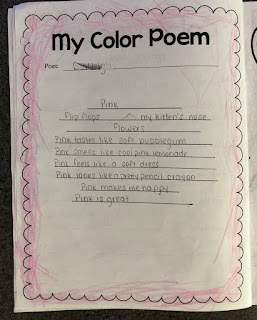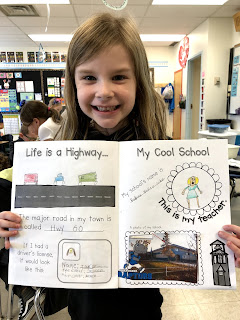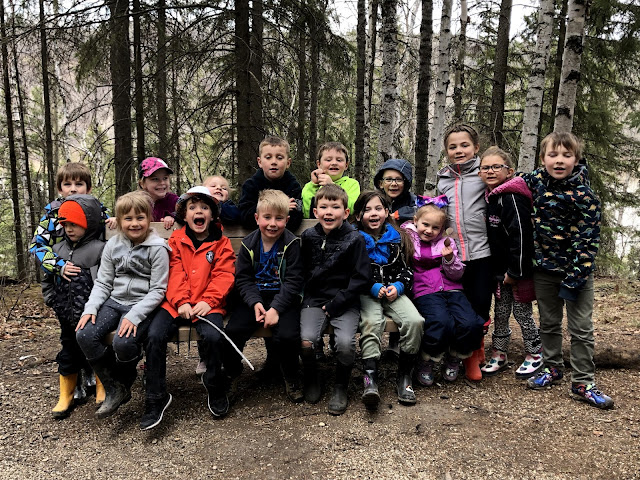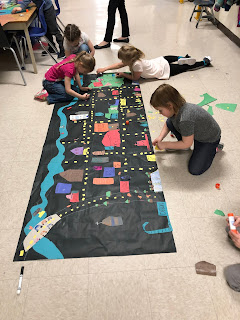We had so much fun creating these cool splatter pain rainy scenes!
First, we covered the space where the person with the umbrella would go.
Second, we used toothbrushes and two shade of blue paint to splatter on the rain.
Then, we removed the paper so that we could draw the umbrella and person in the white space.
They turned out so well!
Lots of fun doing a variety of Word Work Centres this week.
Kaboom!
Magnet Words
Salty Words
Boogie Boards
We created an awesome mural of the Town of Devon with landmarks and spaces that the students chose as important parts of our community.
Students selected landmarks and outdoor spaces in Devon that they thought were important to them and created a "window" to their community.
 After reading the story Duck! Rabbit! students had to decide which it was. We discussed what an opinion was and their job was to write four convincing reasons why they thought it was either a duck or a rabbit. The results were overwhelmingly that it was a rabbit! This was a practice in persuasive writing, preparing for a larger persuasive writing project later in the month.
After reading the story Duck! Rabbit! students had to decide which it was. We discussed what an opinion was and their job was to write four convincing reasons why they thought it was either a duck or a rabbit. The results were overwhelmingly that it was a rabbit! This was a practice in persuasive writing, preparing for a larger persuasive writing project later in the month.
After they completed the writing part, the students made a line art project with either a duck or a rabbit. They turned out to be so incredibly cute!
The next poem that we learned to write is called a shape poem
- or a concrete poem.
We decided to do one about rain. We brainstormed as many words and phrases as we could that reminded us of rain. Then the students chose at least 10 words and phrases to create a shape poem on a raindrop.
We will hang them from our ceiling.
In small groups, we looked a variety of pictures and sorted them into two group. I didn't give any instructions except that they had to sort them into two groups. Then we went on gallery walk to see how all the groups sorted their pictures.
The next day, we had conversations about what makes something living or nonliving and I recorded their ideas.
The students then sorted the pictures again but this time they had to sort them into living and nonliving.
After they sorted the pictures, each group read a different book about living and nonliving things. The groups had to report back to the whole class about something new that they learned from their book.
To wrap everything up, we came up with a list of 4 things that help us identify living things from nonliving things.
In math this week we continued to work on our addition math facts by playing the fun shaker math game. Students walked around the room shaking their dice until the music stopped or they heard 'stop'. They then quickly found a partner, lined up their dice shakers, and went through the addition math facts on the dice. They recorded the equations and the commutative property of each. Loud, but lots of fun and learning happening here.















































































































